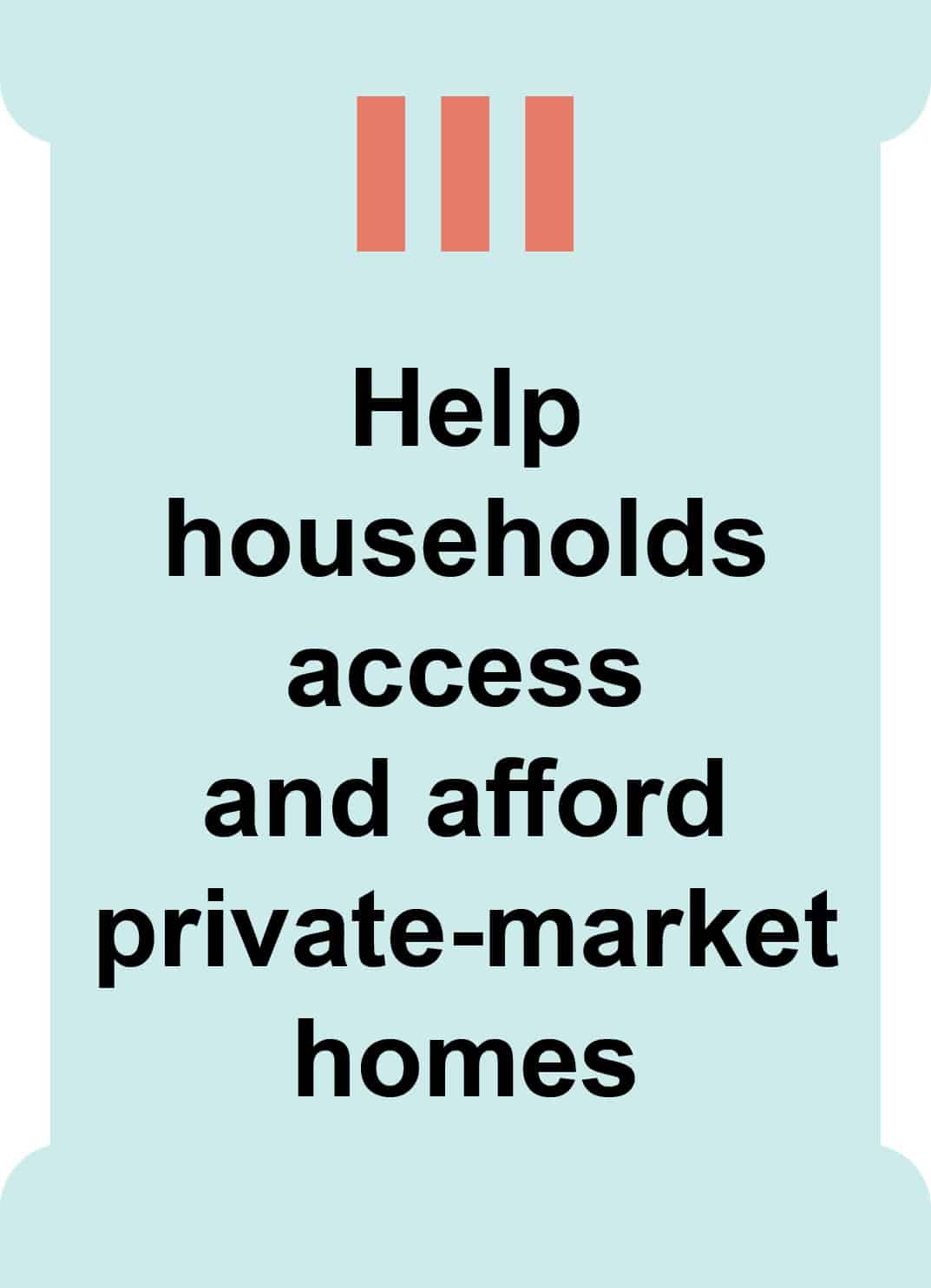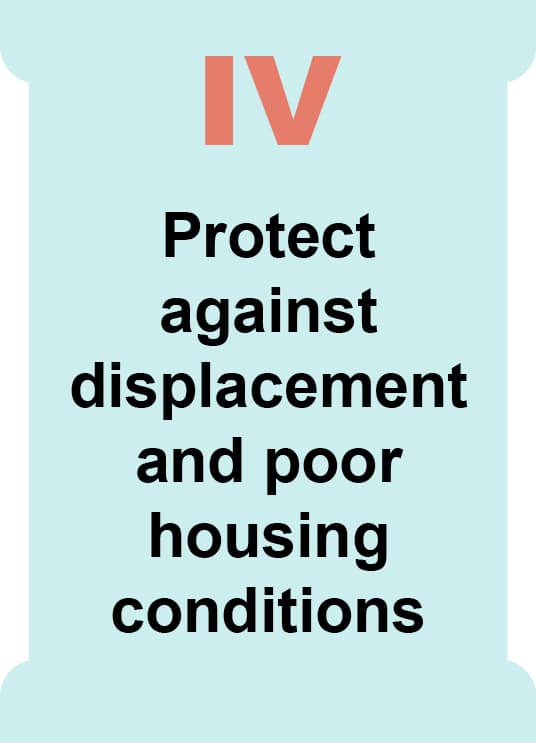4.2 Policy Options
Progress bar
75%
How Can Localities Understand the Full Array of Local Housing Policy Options?
With so many housing policy choices, it can be hard to know where to start. To help localities better understand their policy options, Local Housing Solutions has developed a policy framework that organizes over 90 policies into four main pillars.
Watch this video on the LHS Policy Framework.
The Policy Framework can help localities develop comprehensive housing strategies that cover the full array of actions needed to effectively address local housing challenges. Smaller localities will likely need at least one policy within each pillar, while larger places will likely need at least one policy that corresponds to each of the subcategories within the four pillars. The framework also references complementary policies that can strengthen the connections between housing and other social values, such as education, health, and environmental sustainability. Explore the four pillars by clicking on each of the pillars below. To learn more about the Policy Framework, including the policy categories, see the Developing a Strategy training.
Four Pillars of a Comprehensive, Balanced Local Housing Strategy
Click each pillar and complementary policies to learn more.


Policies in the first pillar help to create and preserve dedicated affordable housing units, which are units that come with legal restrictions on the rents, home prices, or incomes of future occupants. Among others, the policies in this pillar include funding strategies that generate revenue to support new development or preservation and incentives or requirements for new development to include affordable units.
General obligation bonds are one strategy that can be used to generate funding to support dedicated affordable housing.
In 2019, for example, residents of Durham, NC, voted in favor of a $95 million affordable housing bond to fund the Affordable Housing Bond Investment Plan. The plan will help create new dedicated affordable housing units, preserve affordable rental units, and advance goals under other policy pillars, including policies related to homelessness, homeownership, and residential stability. The additional housing financed is projected to increase Durham’s affordable housing stock by at least a third and create nearly 3,000 jobs.

Policies in the second pillar promote affordability by making it easier for the private sector to increase the overall supply of housing. In other words, these policies expand affordable housing access by helping align the locality’s housing supply with its market and neighborhood housing conditions. Some policies to expand the housing supply include allowing higher residential density and improving the predictability of the development processes. The second pillar also includes policies to help localities struggling with vacant and abandoned properties.
The process associated with obtaining approval for new construction can be time-consuming and costly. To help developers increase the overall supply of housing, one strategy that some localities have adopted is to streamline their permitting processes.
For example, in 2012, Montgomery County, MD, launched a cross-agency initiative to streamline its development process, which involved the Department of Permitting Services, Fire and Rescue Services, and the Planning Board. The County held forums to identify bottlenecks, duplicative review requirements, and inconsistencies. It also facilitated roundtable discussions and working groups to address discrete topics, like rezonings, right-of-way permits, and building permits.

Policies in the third pillar focus on helping households access and afford housing by lowering program costs or increasing housing choices. The policies include providing tenant-based rental assistance, reducing barriers to homeownership, and combating housing discrimination.
Down payment and closing cost assistance is an example of a policy to help low- and moderate-income families overcome one of the most common barriers to homeownership.
In Denver, CO, the city has a $30 million revolving loan pool to fund Metro Mortgage Assistance Plus, which provides grants for low and moderate-income homebuyers to cover their downpayment and closing costs of up to 4 percent on a 30-year fixed loan.

Policies in the fourth pillar focus on helping renters and homeowners remain stably housed. They also enhance housing quality and prevent the loss of existing units to deterioration. Policies within this pillar include eviction and foreclosure prevention programs, rehab assistance, and special programs to maintain the viability and quality of small multifamily housing.
Among other approaches, localities interested in helping tenants at risk for eviction can fund organizations that provide free legal services to low-income renters.
For example, Newark, NJ, through the National Coalition for a Civil Right to Counsel, became the third city to create a legal right to counsel for tenants facing evictions in June 2019 and initially allocated $400,000 for the program. This policy helps level the playing field for tenants in eviction proceedings, where landlords generally can afford legal representation, whereas low-income tenants often cannot.

Complementary policies – Housing policies can have an impact on outcomes in many other social policy domains, including health, education, transportation, and environmental sustainability, among others. Expanding a locality’s strategy to include policies at the intersection of housing and one or more of these other domains can help the locality more intentionally take advantage of this synergy and expand the base of support for the locality’s housing strategy.
The Developing a Strategy training explores the Policy Framework in much more depth. To explore the framework on your own, visit the Local Housing Solutions’ Housing Policy Library, where you can access the full list of policy subcategories and view briefs on specific policies. The briefs introduce key components and considerations of each policy and provide links that can help you access more in-depth information.